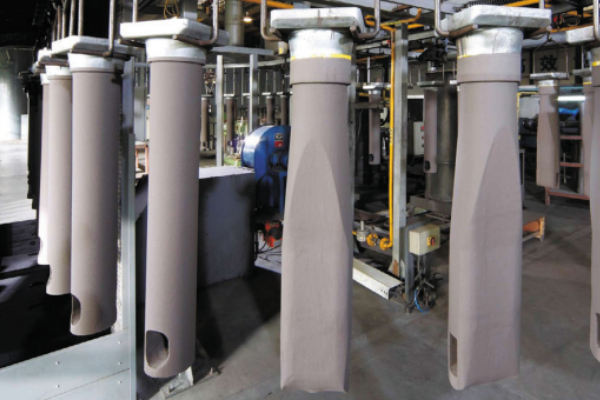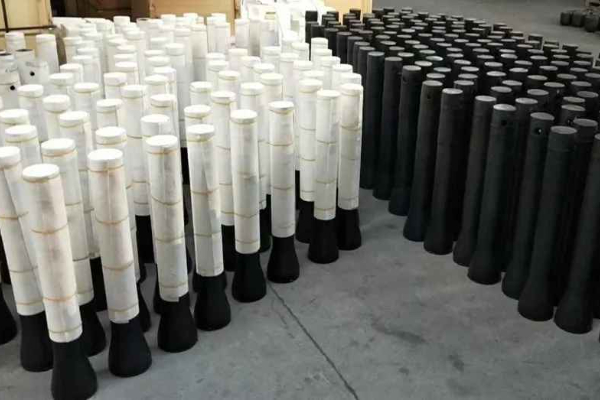Саңылауларды бітелу балқытылған болаттың құрамы сияқты факторларға байланысты, Ыдастыру әдісі, Температура мен уақытты құю, және қосымшаның саптамасы материалы және пішіні.
Blockage is most severe in aluminum-killed steel, steel with high aluminum content, rare earth steel, and titanium-containing steel. The mineral composition of the blockage is primarily a mixture of α-Al₂O₃ and FeO. Blockage occurs when deoxidation products such as Al₂O₃ in the molten steel, or when dissolved [Al] in the steel reduces SiO₂ in the refractory to produce Al₂O₃, or when the refractory itself undergoes oxidation reactions to produce Al₂O₃, which deposits on the nozzle’s inner wall. Simultaneously, at high temperatures, Al₂O₃ particles sinter, leading to the growth of a cohesive layer.

Anti-clogging submerged nozzle
The main method is to compound a layer of lining with anti-clogging function on the inner wall of the nozzle, so that the Al₂O₃ in the molten steel and the substances in the nozzle material generate low-melting aluminate. As the molten steel runs off, the adhesion of aluminum compounds on the inner wall of the nozzle is reduced, preventing the deposition of Al₂O₃.
CaO·ZrO₂ can be used in lining materials. When CaO·ZrO₂ transforms into cubic ZrO₂, and when cubic ZrO₂ transforms into baddeleyite, CaO separates from CaO·ZrO₂ and non-hydrated calcifications and becomes evenly dispersed in the material matrix, accelerating the reaction between CaO and Al₂O₃. For this purpose, a CaO-ZrO₂-C composite submerged nozzle was developed.
Since nitrides are almost non-wettable by molten steel, Al₂O₃ in the molten steel does not easily adhere to the inner wall of the nozzle. At the same time, the interfacial tension between BN and Al₂O₃ is greater than that between graphite. Therefore, BN-based materials can be used in composite immersion nozzles. For this purpose, the Al₂O₃-BN-C composite immersion nozzle has been developed.
Utilize a structural anti-clogging submerged nozzle

①Sub-entry nozzle with annular vent plug: A porous vent plug is embedded inside the zirconia nozzle. Argon gas is blown in from outside to form an argon film between the inner surface of the nozzle and the molten steel, preventing the molten steel and Al₂O₃ from adhering to the inner wall of the nozzle.
② Sub-entry nozzle with embedded vent plug: A small vent plug is embedded in the nozzle wall. Argon gas is blown into the nozzle through the vent plug, forming an air film on the inner wall of the nozzle, preventing Al₂O₃ deposition in the molten steel.
③ Sub-entry nozzle: A permeable layer is installed inside the nozzle, with a gap between the nozzle and the permeable layer. When pouring molten steel, argon gas is blown in from outside to pass through the permeable layer, forming an air film on the inner wall of the nozzle, thereby preventing Al₂O₃ from precipitating in the molten steel and preventing nozzle blockage. ④ Stepped submerged nozzle: This nozzle can prevent unevenness or turbulence caused by the re-stirring of the molten steel flow. At the same time, the foaming effect caused by repeated stirring of argon gas is evenly distributed on the inner surface of the nozzle, thereby reducing the deposition of Al2O3.
 Rongsheng тобы
Rongsheng тобы

WeChat
wechat арқылы QR кодын сканерлеңіз